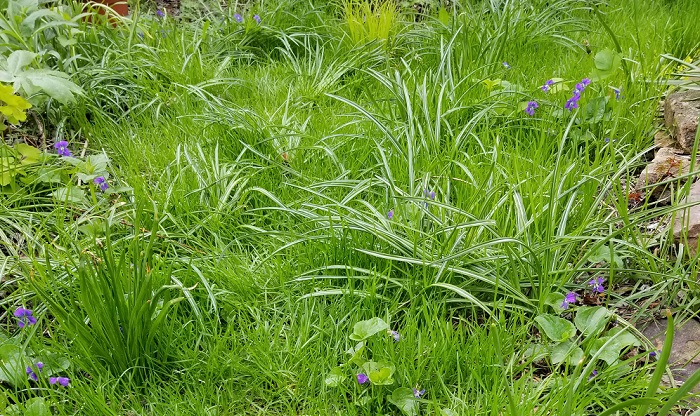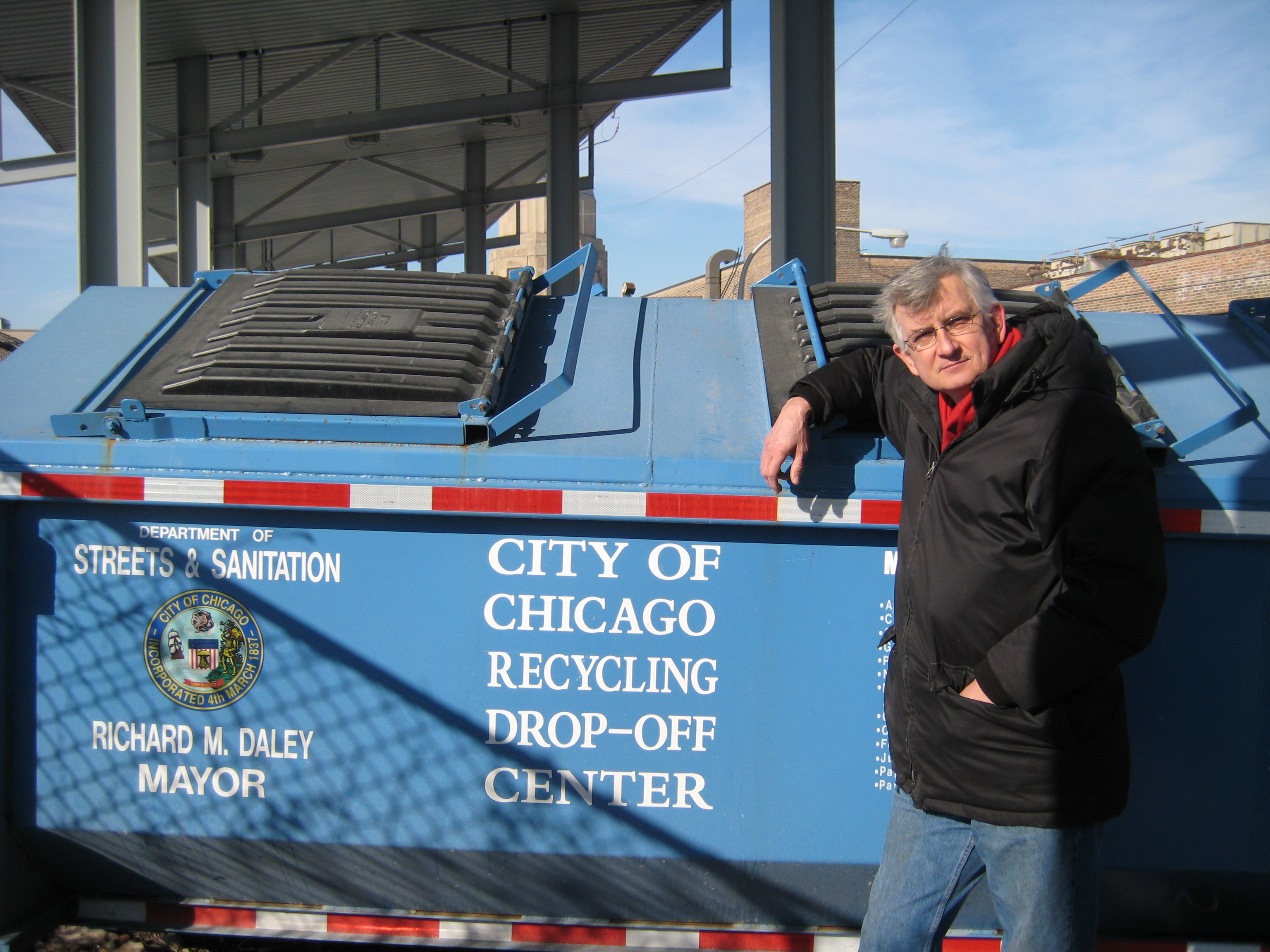A Million Healthy Gardens
Podcast: Play in new window | Download (Duration: 1:43:30 — 48.4MB)
Subscribe: Apple Podcasts | Spotify | Android | iHeartRadio | Podchaser | Email | TuneIn | RSS | More
Making a difference for wildlife in your yard
(May 19, 2019) Actually, a million healthy gardens is just a start. We need a lot more than that to mitigate even some of the damage to our environment caused by habitat loss, pesticide use and the introduction of non-native plant species. But an initiative called the Million Pollinator Garden Challenge is doing its best to help. The National Pollinator Garden Network (NPGN) started the program in 2015, and, to date, it includes 1,040,000 gardens. That also means 50 conservation, garden trade, and civic organizations that represent more than 850,000 members.
One of the key organizations behind that effort is the National Wildlife Federation, America’s largest conservation organization. Right now they are celebrating their 7th Annual Garden for Wildlife Month. In the United States alone, a million acres a year are engulfed by expanding urban and suburban development. Believe it or not, you can make a difference in your own backyard by creating habitat for critters.
Celebrating 46 years this spring, Garden for Wildlife’s signature program, Certified Wildlife Habitats® has grown to 230,000 sites encompassing backyards, gardens, fields, and community spaces. These areas support and protect the future of birds, bees, butterflies, and other amazing wildlife. Anyone, no matter their age or location, can participate with almost immediate results – potentially doubling the numbers of diverse local wildlife.
Mary Phillips, senior director of the Garden for Wildlife program at NWF, and a driving force behind the Million Pollinator Garden Challenge, joins us this morning.
Chicago Grows Green Week
I don’t understand why Midwest Grows Green (MGG) has an orange stamp logo. After all it’s a “green” organization. It’s a collective of community-based lawn and landscape care initiatives with the goal of protecting people, pets and the environment by practicing natural lawn care. However, natural lawn care is something I do understand.

And I’m completely on board with Chicago Grows Green Week, June 1st through June 8th. This week will host four public events that demonstrate how to “Grow Pesticide-Free Lawns & Gardens for the Long-Term”. Here are the events.
- CGG Week Kickoff, June 1st: Celebrate Riverdale Park District’s commitment to safe and pesticide-free parks.
- Lisle Organic Park Kickoff, June 2nd: Learn about pollinator protection and Lisle Park District’s four new organic parks at this natural lawn care demonstration.
- MGG Forum’s Building Capacity Webinar, June 3rd: Explore the stakeholders and decisions behind Park Ridge-Niles School District 64’s new natural lawn care program for all properties.
- CGG Week Celebration Fundraiser, June 8th– Support MGG programs across Greater Chicago at Dig Right In Landscaping, Inc.’s office in Westchester. Purchase compost tea at bit.ly/CGGcomtea or native plants at bit.ly/CGGnatives.
Ryan Anderson from MGG joins us in studio this morning. He also happens to be Community IPM Outreach Specialist for the IPM Institute of North America, Inc. There’s nothing I like better than convincing people to ignore the chemical propaganda they’ve seen on TV for the last 60 years. Let’s do it.
More bad news about recycling in Chicago
In October of last year, Better Government Association (BGA) investigative reporter Madison Hopkins was on this show. At that time, she revealed one of the worst kept secrets in America: Chicago’s recycling program stinks. Perhaps literally, but always figuratively.
In a blockbuster investigation and report that revealed the lack of political will to get the job done, she wrote:
Mayor Rahm Emanuel’s administration has allowed a private city recycling hauler to divert tons of residential plastics and paper into landfills the company owns, costing taxpayers twice and aggravating Chicago’s worst-in-the-nation recycling rate, a Better Government Association investigation has found.
This creates a distorted scenario under which the plastic, glass and metals of residents on the Northwest and Far South sides — areas where Texas-based Waste Management, Inc. holds the city’s recycling contract — are far more likely than other Chicagoans to see their discarded recycling dispatched to garbage dumps.
If you care about recycling, do yourself a favor and read the entire piece.
That story, however, primarily concerned the Blue Cart Program. That city service covers the 600,000 or so buildings that have four or fewer units. So what about high rises, or, as they are known, multi-unit building?
The news there is not good, either. In a brand new report, released a couple of weeks ago, Hopkins follows up with more damning evidence of rampant incompetence. The headline gives you a clue:
How Many Of Chicago’s 77,000 Big Buildings Recycle? Nobody Knows.

Welcome to the wonderful world of recycling in America’s third largest city. Those of us who have followed these things know about the so-called Burke-Hansen law from 1993. Which was never enforced. Full disclosure: I was once president of the Chicago Recycling Coalition, and we used to scream into the void about that lack of enforcement. But back to Madison Hopkins and her new report. Among her findings,
More than two years since Mayor Rahm Emanuel vowed a recycling crackdown on thousands of Chicago’s largest landlords, his administration has handed out only three fines totaling $750.
Emanuel’s enforcement of his own mandate for landlords to provide recycling services for tenants has been undermined by a series of bureaucratic mistakes and a lack of execution by city regulators, a Better Government Association investigation found.
The review of city records found only a tiny fraction of Chicago’s nearly 77,000 larger residential and commercial buildings were ever inspected for compliance despite Emanuel’s get-tough rhetoric, with many being let off the hook by officials, records show.
But it goes deeper than that.
…as Emanuel prepares to leave office May 20 after eight years as mayor, his rhetoric on the environment is belied by a record of deference to corporate polluters, waste management companies and the city’s monied real estate interests.
In the past year, the BGA reported how Chicago’s residential recycling rate has plummeted to the lowest of any major city under Emanuel, how his administration allows private haulers to divert recycling to landfills, and how citations issued against polluters have plunged to about one-third the total issued under his predecessor.
Corruption? In Chicago? I’m shocked! Shocked, I tell you!
Once again, I ask you to read the full story, which includes information on how to rat out your scofflaw landlord if he or she hasn’t set up a recycling system for your building. It also has a list of city recycling inspections conducted in 2017 and 2018 at commercial and larger residential buildings throughout Chicago, and whether or not they passed. You can check the list to see if your building was inspected and whether the inspector got it right or gave your building a pass! Fun with recycling!
All of this said, is there really any point in recycling? After all, publications like the New York Times report that
Recycling, for decades an almost reflexive effort by American households and businesses to reduce waste and help the environment, is collapsing in many parts of the country.
The Atlantic piles on, breathlessly asking, Is This the End of Recycling? And China is to blame.
For decades, we were sending the bulk of our recycling to China—tons and tons of it, sent over on ships to be made into goods such as shoes and bags and new plastic products. But last year, the country restricted imports of certain recyclables, including mixed paper—magazines, office paper, junk mail—and most plastics. Waste-management companies across the country are telling towns, cities, and counties that there is no longer a market for their recycling. These municipalities have two choices: pay much higher rates to get rid of recycling, or throw it all away.
Well, we could argue for hours about what’s happening here. But publications like Resource Recycling are pushing back on that narrative.
Recycled commodity markets have fluctuated wildly over the past couple years, as overseas markets have opened and closed their doors to imported material and a flood of domestic material has pushed down prices. But even though parts of 2017 and 2018 were difficult across the board for recycled material markets, shifts throughout 2018 have stabilized certain commodities.
And Bloomberg journalist Adam Minter, who has a book and a blog that go by the name of Junkyard Planet, took to Twitter to write
A long-ish thread on what happens when a major news outlet reports on a multi-billion dollar industry without bothering to look at industry data, first. I am, of course, talking about the NYT’s recent reporting on America’s so-called recycling crisis.
He notes that recycling ups and downs are
…an old story — global demand for raw materials (and that’s what the contents of your blue bin are – raw materials) waxes and wanes, shifts and slides, with the growth and decline of manufacturing economies.
I suggest you take a look at his thread. Recycling is not dead. And we will talk about it on today’s show.


